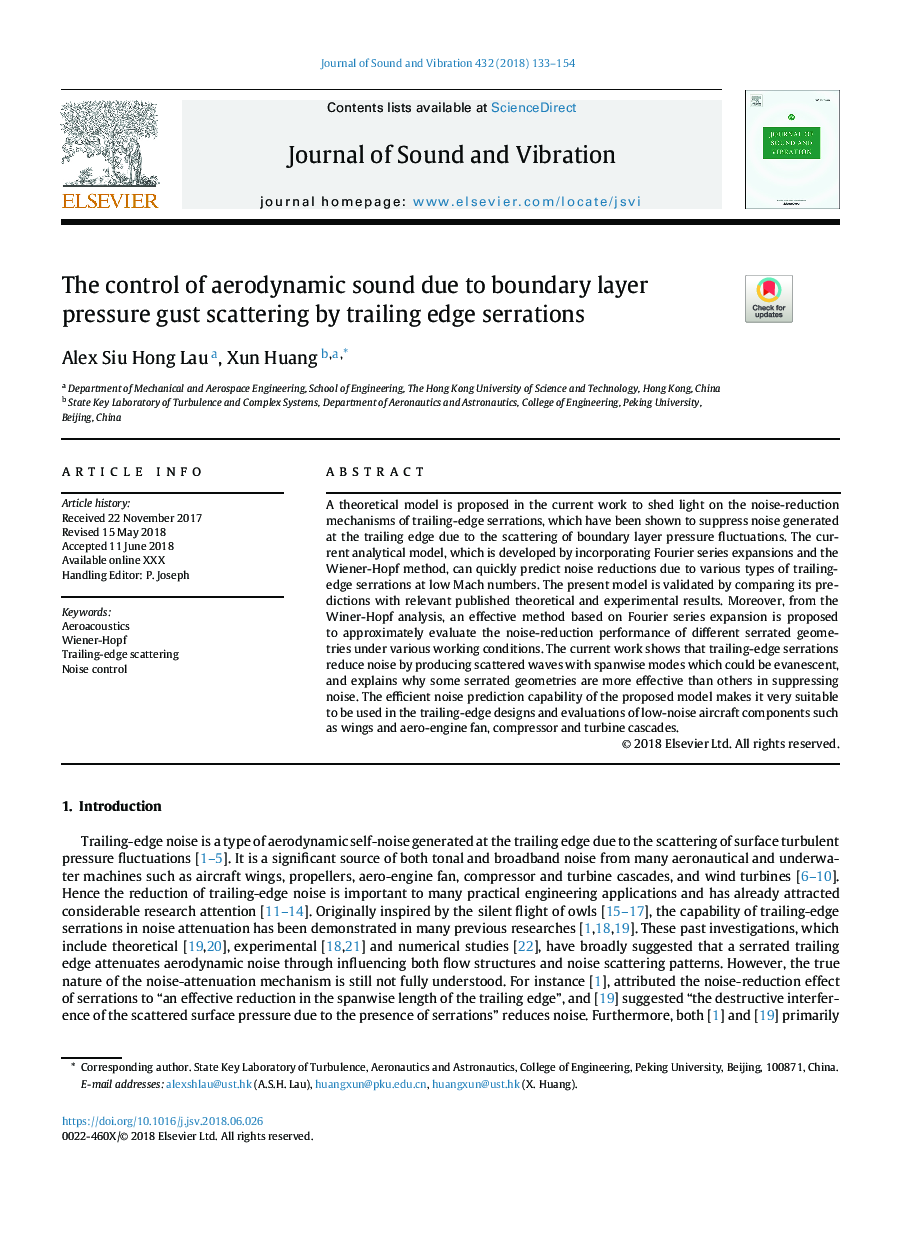| Article ID | Journal | Published Year | Pages | File Type |
|---|---|---|---|---|
| 6752788 | Journal of Sound and Vibration | 2018 | 22 Pages |
Abstract
A theoretical model is proposed in the current work to shed light on the noise-reduction mechanisms of trailing-edge serrations, which have been shown to suppress noise generated at the trailing edge due to the scattering of boundary layer pressure fluctuations. The current analytical model, which is developed by incorporating Fourier series expansions and the Wiener-Hopf method, can quickly predict noise reductions due to various types of trailing-edge serrations at low Mach numbers. The present model is validated by comparing its predictions with relevant published theoretical and experimental results. Moreover, from the Winer-Hopf analysis, an effective method based on Fourier series expansion is proposed to approximately evaluate the noise-reduction performance of different serrated geometries under various working conditions. The current work shows that trailing-edge serrations reduce noise by producing scattered waves with spanwise modes which could be evanescent, and explains why some serrated geometries are more effective than others in suppressing noise. The efficient noise prediction capability of the proposed model makes it very suitable to be used in the trailing-edge designs and evaluations of low-noise aircraft components such as wings and aero-engine fan, compressor and turbine cascades.
Keywords
Related Topics
Physical Sciences and Engineering
Engineering
Civil and Structural Engineering
Authors
Alex Siu Hong Lau, Xun Huang,
